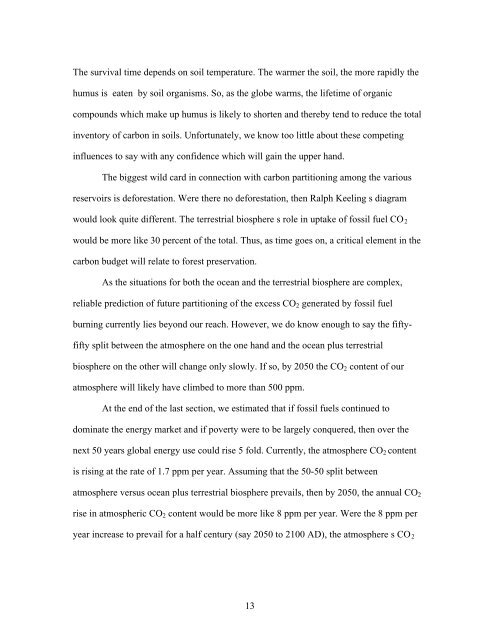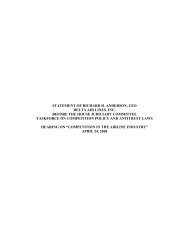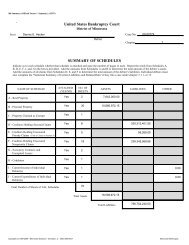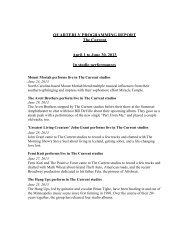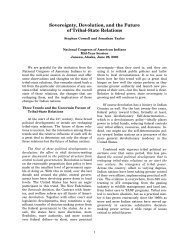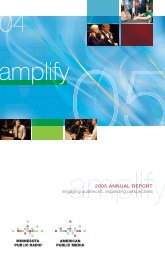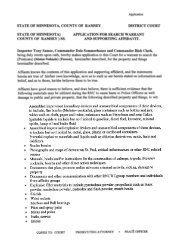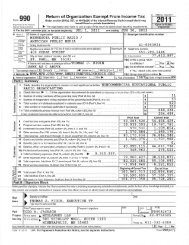fossil fuel co2 and the angry climate beast - American Public Media
fossil fuel co2 and the angry climate beast - American Public Media
fossil fuel co2 and the angry climate beast - American Public Media
You also want an ePaper? Increase the reach of your titles
YUMPU automatically turns print PDFs into web optimized ePapers that Google loves.
The survival time depends on soil temperature. The warmer <strong>the</strong> soil, <strong>the</strong> more rapidly <strong>the</strong><br />
humus is eaten by soil organisms. So, as <strong>the</strong> globe warms, <strong>the</strong> lifetime of organic<br />
compounds which make up humus is likely to shorten <strong>and</strong> <strong>the</strong>reby tend to reduce <strong>the</strong> total<br />
inventory of carbon in soils. Unfortunately, we know too little about <strong>the</strong>se competing<br />
influences to say with any confidence which will gain <strong>the</strong> upper h<strong>and</strong>.<br />
The biggest wild card in connection with carbon partitioning among <strong>the</strong> various<br />
reservoirs is deforestation. Were <strong>the</strong>re no deforestation, <strong>the</strong>n Ralph Keeling s diagram<br />
would look quite different. The terrestrial biosphere s role in uptake of <strong>fossil</strong> <strong>fuel</strong> CO2<br />
would be more like 30 percent of <strong>the</strong> total. Thus, as time goes on, a critical element in <strong>the</strong><br />
carbon budget will relate to forest preservation.<br />
As <strong>the</strong> situations for both <strong>the</strong> ocean <strong>and</strong> <strong>the</strong> terrestrial biosphere are complex,<br />
reliable prediction of future partitioning of <strong>the</strong> excess CO2 generated by <strong>fossil</strong> <strong>fuel</strong><br />
burning currently lies beyond our reach. However, we do know enough to say <strong>the</strong> fifty-<br />
fifty split between <strong>the</strong> atmosphere on <strong>the</strong> one h<strong>and</strong> <strong>and</strong> <strong>the</strong> ocean plus terrestrial<br />
biosphere on <strong>the</strong> o<strong>the</strong>r will change only slowly. If so, by 2050 <strong>the</strong> CO2 content of our<br />
atmosphere will likely have climbed to more than 500 ppm.<br />
At <strong>the</strong> end of <strong>the</strong> last section, we estimated that if <strong>fossil</strong> <strong>fuel</strong>s continued to<br />
dominate <strong>the</strong> energy market <strong>and</strong> if poverty were to be largely conquered, <strong>the</strong>n over <strong>the</strong><br />
next 50 years global energy use could rise 5 fold. Currently, <strong>the</strong> atmosphere CO2 content<br />
is rising at <strong>the</strong> rate of 1.7 ppm per year. Assuming that <strong>the</strong> 50-50 split between<br />
atmosphere versus ocean plus terrestrial biosphere prevails, <strong>the</strong>n by 2050, <strong>the</strong> annual CO2<br />
rise in atmospheric CO2 content would be more like 8 ppm per year. Were <strong>the</strong> 8 ppm per<br />
year increase to prevail for a half century (say 2050 to 2100 AD), <strong>the</strong> atmosphere s CO 2


